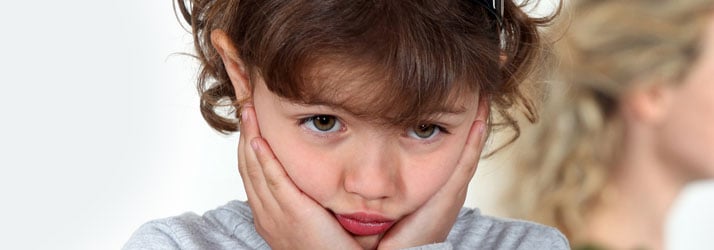Table of Contents
Does My Child Have Sensory Issues?
Sensory issues present themselves in different ways at different times. Children of all ages, and even adults, can struggle with input from sound, sight, smell, taste, and touch. These are the five senses we expect to “deal” with but we often lack knowledge in two other senses that affect children —proprioception and vestibular. Proprioception refers to body awareness and vestibular is connected with moving, balancing, and coordination.
Sensory issues in children can be due to overstimulation or a lack of stimulation. Some children experience both. These problems can be tough on kids, and get in the way of them functioning effectively, learning, and making friends.
Parents of children with sensory processing disorder can struggle to know where to turn to for help. If that’s you and you’re looking for some relief for your child and family, please continue reading. We’re here to help.
Input that Overwhelms Children with Sensory Issue
The ways that children respond to their environment vary from child to child. Children may be over-sensitive (also known as hypersensitivity) or under-sensitive (also known as hyposensitivity). There are common traits of each type.
Children that Experience Hypersensitivity Often Find Stimulation Overwhelming
These children may:
- May struggle with bright light or loud noise (fireworks, parades, etc.)
- Get distracted by extra noises (music in a restaurant, cash register, etc.)
- Fear fast-paced “rides” or toys (carnival rides, swings, etc.)
- Be very specific about which clothing they will wear (tags, labels, tightness, fabric, etc.)
- Poor balance, often bumps into things (seems unaware of other people or objects)
- Lack of motor skills (difficult to button, zip, tie, sharpen a pencil, cut with a scissors, etc.)
Children that Experience Hyposensitivity Often Look For More Sensory Input
These children may:
- Pain tolerance seems high
- Lots of movement (does not sit in a chair, likes to have something in their hand to keep busy, etc.)
- Wants more “rough” movement (likes jumping, being thrown, etc.)
- Looks for opportunities to spin, break through something hard, move faster
- Unaware of personal space
- Touches objects with different textures, even when inappropriate
Some more examples from everyday life:
If the above lists weren’t enough to help you decide whether your child is hyper- or hypo-sensitive, here are a few more examples.
One example: You’re in the bathroom at the grocery store and the person in front of you uses the hand dryer. Your child is overstimulated by the sound. They immediately break into a full fit, covering their ears (to help block the sound), yelling (to drown the sound), and laying on the ground (to block some of the vision field for less sensory input).
A second example: Your child is a “picky” eater but you order your child’s favorite food at a restaurant. It is slightly different from what they expected. Their oversensitivity results in anxiety and needing to take the food to go.
A final example: At the park, your child continues to lose balance on a toy that other children their age have mastered. Their “clumsiness” seems like immaturity or a lack of body control. It is actually more of a result of lack of brain organization (in motor areas).
6 Tips to Help Your Child with Sensory Challenges
Caregivers can help children with sensory issues by teaching techniques that help calm their nervous system and reset their brain. Here is a quick list of tips to try with your child BEFORE they experience another situation that throws them into a spiral. To make this work: Be sure to talk about it, model it, and practice it. Make cues (words, action, etc.) that remind your child what to do when they’re in the heat of the moment. After that, be patient. Most children will not succeed the first time but will grow and get better over time until they have mastered their favorite technique(s). The goal is for them to successfully self-regulate.
1. Use deep pressure. Children can bear hug their legs or learn to use pressure points to calm themselves.
2. Deep breaths can be practiced. Your child should take deep breaths if they are starting to feel over whelmed or if they are given a specific cue (this can be a word, action, or anything that works when a caretaker identifies a trigger that could lead to a spiral).
3. Oral stimulation including (but not limited to) drinking water, chewing gum, sugar-free sucker, or anything that would not be a distraction.
4. Exercise ball or t-stool can replace their chair with a ball or wobble cushion or t-stool (at home and school). There are lots more ideas for flexible seating online.
5. Hand fidget should not be a distraction, should not need to be seen, and should be one piece. Good examples are “push poppet toys“, stress ball, fidget spinner (although these are typically banned in schools).
6. Chiropractic Care is a holistic choice that can be included as part of the puzzle. Chiropractic can help children that are over or under stimulated…and some are both!
Sensory Processing Disorder
Doctors of chiropractic can provide regular adjustments and help identify symptoms of sensory processing disorder; however, they cannot diagnose. An occupational therapist, on the other hand, can identify if your child has this condition and occupational therapy may be recommended. Regardless, the goal is to help children become self-regulating so that they are not so impacted by their environment. A chiropractor and occupational therapist have different roles in the bigger picture.
ADIO Chiropractic
At ADIO Chiropractic, we specialize in pediatric chiropractic care and would love to answer your questions. Dr. Eric Kurzinski has worked with children and families to help implement a plan for children struggling with sensory processing.
References
https://www.understood.org/articles/en/understanding-sensory-processing-issues
https://www.mvorganizing.org/how-do-i-know-if-my-child-has-sensory-issues/
https://childmind.org/article/sensory-processing-issues-explained/
https://childmind.org/article/sensory-processing-faq/
https://parentology.com/news-what-is-a-pop-it-fidget-toy/



